Here’s what bats ‘see’ when they explore the world with sound
New info is overturning ideas about how using sound limits a bat’s view of the world
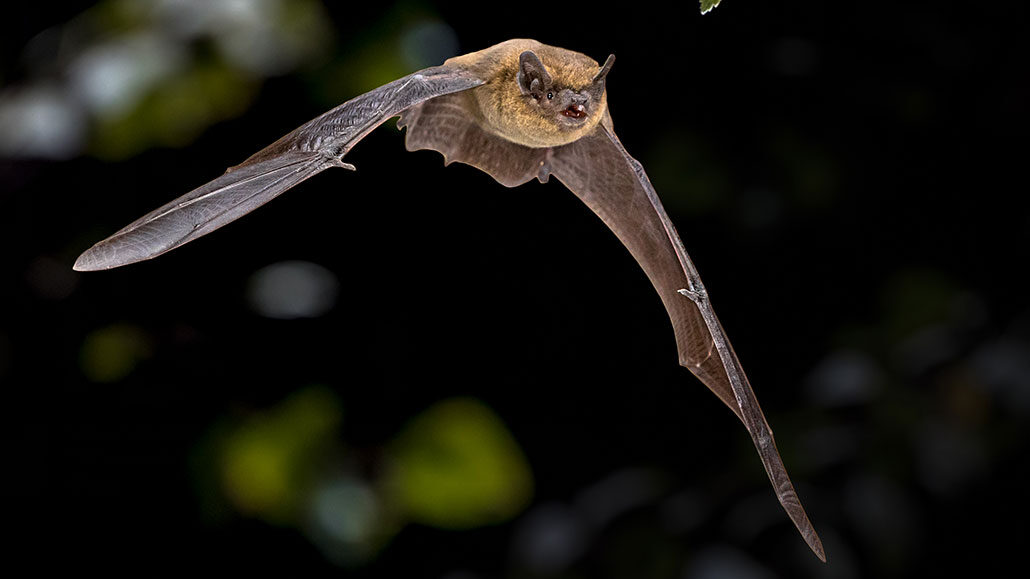
Most mammals rely on sight to get around. Bats navigate and hunt using sound. They make high pitched calls and their ears detect the echoes. Scientists are now getting a better understanding of what these animals perceive though echolocation.
CreativeNature_nl/iStock/Getty Images Plus
Night falls on Barro Colorado Island in Panama. A golden glow bathes the tropical forest’s countless shades of green. At this enchanted hour, the residents of the forest grow raucous. Howler monkeys growl. Birds chatter. Insects trumpet their presence to potential mates. Other sounds join the fray — calls too high-pitched for human ears to hear. They come from hunters heading into the night: bats.
Some of these petite predators catch huge insects or even lizards that they haul back to their roosts. The bats sense their environments and find prey by calling out and listening for echoes made as those sounds bounce off of objects. This process is called echolocation (Ek-oh-loh-KAY-shun).
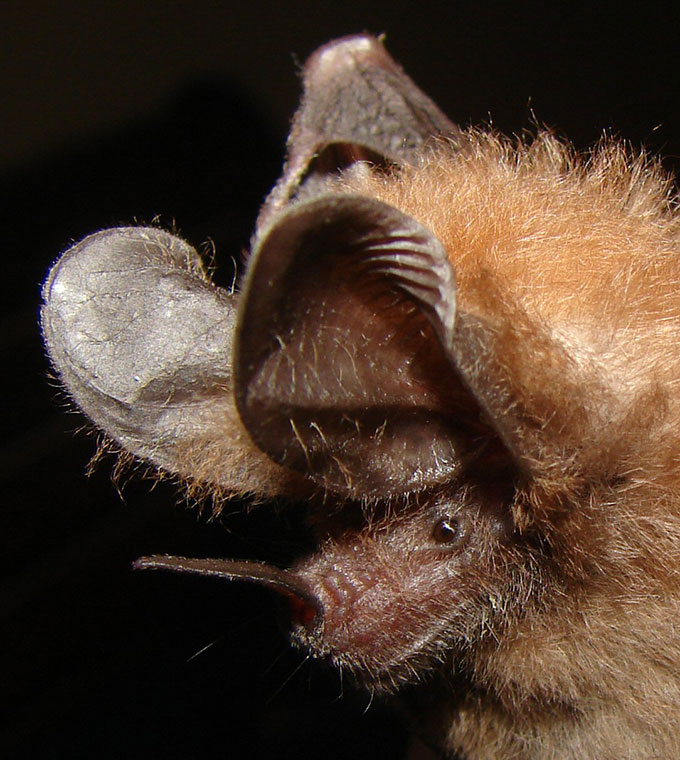
It’s “a sensory system that is kind of alien to us,” says behavioral ecologist Inga Geipel. She studies how animals interact with their environments at the Smithsonian Tropical Research Institute in Gamboa, Panama. Geipel thinks of echolocation as walking through a world of sound. “It’s like basically having music around you all the time,” she says.
Because of how echolocation works, scientists had long thought that bats would not be able to find small insects sitting still on a leaf. An echo bouncing off such a bug would be drowned out by the sound reflected from the leaf, they figured.
Bats aren’t blind. But they rely on sound for information that most animals get with their eyes. For many years, scientists thought this limited a bat’s view of the world. But new evidence is overturning some of those ideas. It’s revealing how other senses help bats fill in the picture. With experiments and technology, researchers are getting the best look yet at how bats “see” the world.
In Panama, Geipel works with the common big-eared bat, Micronycteris microtis. “I’m pretty happy that I can’t hear them, because I think they would be … deafening,” she says. These tiny bats weigh about as much as a coin — five to seven grams (0.18 to 0.25 ounce). They’re super fluffy and have large ears, Geipel notes. And they have a “wonderful, beautiful” nose-leaf, she says. “It’s right above the nostrils and is kind of a heart-shaped fleshy flap.” That structure may help the bats steer their sound beam, she and some colleagues have found.
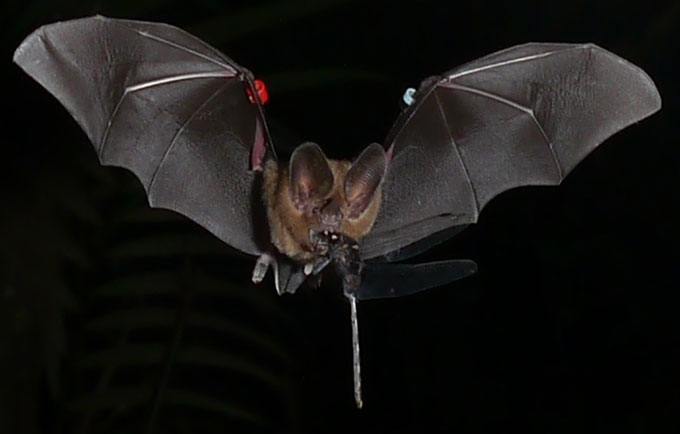
Such thinking suggested bats wouldn’t be able to catch dragonflies. At night, when bats are out, dragonflies are “basically sitting in the vegetation hoping not to get eaten,” Geipel says. Dragonflies lack ears — they can’t even hear a bat coming. That leaves them pretty defenseless as they sit in silence.
But the team noticed that M. microtis seems to feast on dragonflies. “Basically everything left under the roost is bat poop and dragonfly wings,” Geipel noticed. So how did the bats find an insect on its leafy perch?
Call and response
Geipel captured some bats and brought them to a cage for experiments. Using a high-speed camera, she and her colleagues watched how the bats approached dragonflies stuck to leaves. They positioned microphones around the cage. These tracked the bats’ locations as they flew and made calls. The bats never flew straight toward the insects, the team noticed. They always swooped in from the side or below. That suggested that the angle of approach was key to sounding out their prey.
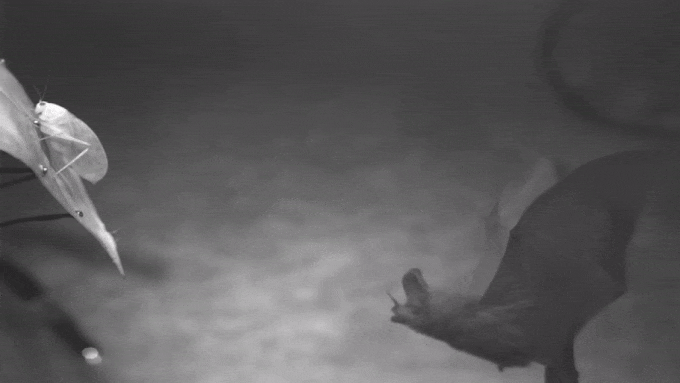
To test this idea, Geipel’s team built a robotic bat head. Speakers produced sounds, like a bat’s mouth. And a microphone mimicked the ears. The scientists played bat calls toward a leaf with and without a dragonfly and recorded the echoes. By moving the bat head around, they mapped out how the echoes changed with the angle.
Bats used the leaves like mirrors to reflect sound, the researchers found. Approach the leaf head-on and the reflections of the sound beam overwhelm anything else, just as scientists had thought. It’s similar to what happens when you look straight into a mirror while holding a flashlight, Geipel notes. The flashlight’s reflected beam “blinds” you. But stand off to the side and the beam bounces off at an angle. That’s what happens when bats swoop in at an angle. Much of the sonar beam reflects away, allowing bats to detect weak echoes bouncing off of the insect. “I think we still know so little about how [bats] use their echolocation and what this system is capable of,” Geipel says.
Bats may even be able to distinguish between similar-looking objects. For instance, Geipel’s team has observed that bats seem to be able to tell twigs from insects that look like sticks. “They have a very accurate understanding of an object they find,” Geipel notes.
Just how accurate? Other scientists are training bats in the lab to try to untangle how clearly they perceive shapes.

Educators and Parents, Sign Up for The Cheat Sheet
Weekly updates to help you use Science News Explores in the learning environment
Thank you for signing up!
There was a problem signing you up.
Palm-sized puppies
Bats can learn a trick or two, and they seem to enjoy working for treats. Kate Allen is a neuroscientist at Johns Hopkins University in Baltimore, Md. She likens the Eptesicus fuscus bats that she works with to “little palm-sized puppies.” This species’ common name, the big brown bat, is a bit of a misnomer. “The body is about chicken-nugget-sized, but their actual wingspan is like 10 inches [25 centimeters],” Allen notes.
Allen is training her bats to distinguish between two objects with different shapes. She uses a method that dog trainers use. With a clicker, she makes a sound that reinforces the link between a behavior and a reward — here, a scrumptious mealworm.
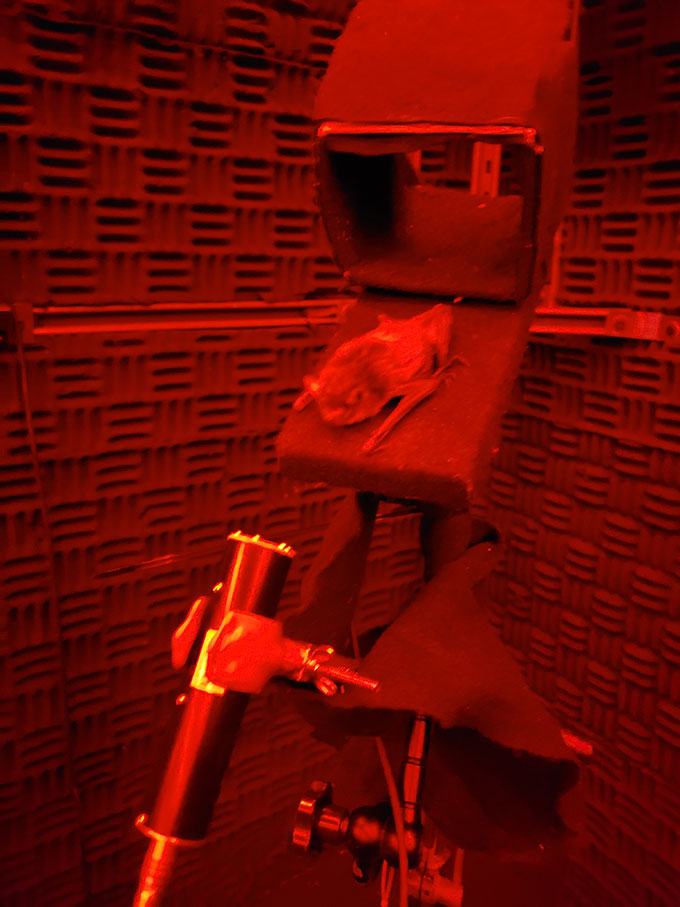
Inside a dark room lined with anti-echo foam, the bats sit in a box on a platform. They face the box’s opening and echolocate toward an object in front of them. If it’s a dumbbell shape, a trained bat climbs onto the platform and gets a treat. But if the bat senses a cube, it should stay put.
Except there’s actually no object. Allen tricks her bats with speakers that play the echoes that an object of that shape would reflect. Her experiments use some of the same acoustical tricks used by music producers. With fancy software, they can make a song sound like it was recorded in an echo-y cathedral. Or they can add distortion. Computer programs do this by altering a sound.
Allen recorded the echoes of bat calls bouncing off a real dumbbell or cube from different angles. When the bat in the box calls, Allen uses the computer program to turn those calls into the echoes she wants the bat to hear. That allows Allen to control what signal the bat gets. “If I just let them have the physical object, they could turn their head and get a lot of angles,” she explains.
Allen will test the bats with angles that they’ve never sounded out before. Her experiment explores whether bats can do something most people easily do. Imagine an object, such as a chair or a pencil. In your mind, you might be able to flip it around. And if you see a chair sitting on the ground, you know it’s a chair no matter what direction it’s facing.
Allen’s experimental trials have been delayed by the coronavirus pandemic. She can go to the lab only to care for the bats. But she hypothesizes that the bats can discern the objects even when they view them from new angles. Why? “We know from watching them hunt [that] they can recognize insects from any angle,” she says.
The experiment also may help scientists understand how much bats need to inspect an object to form a mental image. Are one or two sets of echoes enough? Or does it take a series of calls from many angles?
One thing is clear. To catch an insect on the move, a bat has to do more than pick up its sound. It has to track the bug.
Are you tracking?
Picture a crowded hallway, perhaps in a school before the COVID-19 pandemic. Kids rush between lockers and classrooms. But rarely do people collide. That’s because when people see a person or object in motion, their brains predict the path it will take. Maybe you’ve reacted quickly to catch a falling object. “You use prediction all the time,” says Clarice Diebold. She’s a biologist who studies animal behavior at Johns Hopkins University. Diebold is investigating whether bats also predict an object’s path.
Like Allen, Diebold and her colleague Angeles Salles trained bats to sit on a platform. In their experiments, the bats echolocate toward a moving mealworm. The squirming snack is rigged up to a motor that moves it from left to right in front of the bats. Photos reveal that the bats’ heads always turn slightly ahead of their target. They seem to direct their calls based on the path they expect the mealworm to take.
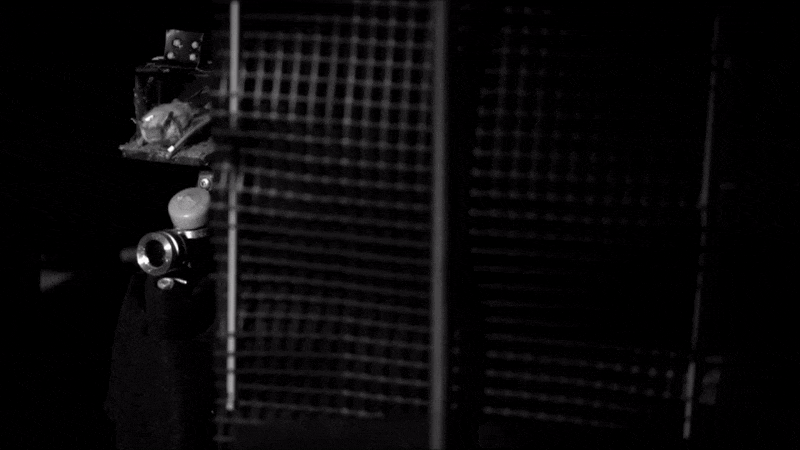
The bats do the same thing even when part of the path is hidden. This simulates what happens when an insect flies behind a tree, for example. But now the bats change their echolocation tactics. They make fewer calls because they aren’t receiving as much data on the moving mealworm.
In the wild, creatures don’t always move predictably. So the scientists mess with the mealworm’s motion to understand if bats update their predictions moment by moment. In some tests, the mealworm moves behind an obstacle and then speeds up or slows down.
And the bats adapt.
When the prey is hidden and pops up a little too early or a little too late, the bats’ surprise show up in their calls, Diebold says. The bats start calling more frequently to get more data. They seem to be updating their mental model on how the mealworm is moving.
This doesn’t surprise Diebold, given that bats are skilled insect-catchers. But she also doesn’t take this ability for granted. “Previous work in bats had reported that they can’t predict [like this],” she notes.
The booty scoop
But bats don’t just pick up information through their ears. They need other senses to help them grab the grub. Batwings have long thin bones arranged like fingers. Membranes covered with microscopic hairs stretch between them. Those hairs allow bats to sense touch, airflow and pressure changes. Such cues help bats control their flight. But those hairs also may help bats with the acrobatics of eating on the go.
To test this idea, Brittney Boublil has figured out bat body-hair removal. A behavioral neuroscientist, Boublil works in the same lab as Allen and Diebold. Removing hair from a bat wing isn’t all that different from how some people rid themselves of unwanted body hair.
Before any batwings get naked, Boublil trains her big brown bats to catch a hanging mealworm. The bats echolocate as they fly toward the treat. As they go to grab it, they bring their tail up and in, using their rear to scoop up the worm. After the catch, the tail flicks the prize into the bat’s mouth — all while they’re still flying. “They’re very talented,” she says. Boublil captures this motion using high-speed cameras. This allows her to track how successful the bats are at grabbing the mealworms.

Then it’s time for an application of Nair or Veet. Those products contain chemicals that people use to remove unwanted hair. They can be harsh on delicate skin. So Boublil dilutes them before slathering some on a bat wing. After one or two minutes, she wipes both the chemical — and hair — away with warm water.
Missing that fine hair, the bats now have more trouble catching their prey. Boublil’s early results suggest that bats miss the worm more often without their tail and wing hairs. Scarce-of-hair bats also spend more time approaching their prey. Boublil thinks these bats aren’t getting as much info about airflow — data that can help them adjust their motions. That may explain why they take their time flying around and echolocating.
These new approaches reveal a more detailed picture of how bats “see” the world. Many early findings about echolocation — which was discovered in the 1950s — still ring true, Boublil says. But studies with high-speed cameras, fancy microphones and slick software show that bats may have a more sophisticated view than previously suspected. A host of creative experiments now are helping scientists get inside bats’ heads in a whole new way.







